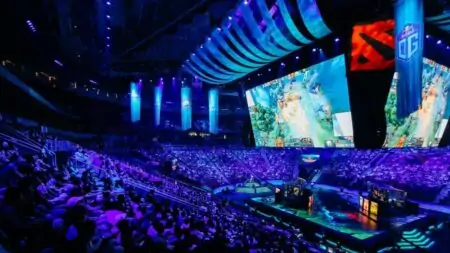Updated on October 8: Added the events from TI9, TI10, and TI11.
Valve’s The International (TI) currently holds the record for the biggest prize pool in esports history when the company raised a whopping US$40,018,195 in 2021. The tournament’s prize pool has only continued to increase since the event began in 2011.
For those who are unfamiliar with the esports industry, it may be hard to imagine how a single tournament can amass a prize pool exceeded only by the biggest major sporting events in the world.
How did it get to this point? Read on as we dive into how TI has repeatedly set and raised the bar for Dota 2 prize pools in esports tournaments.
- Primal Beast TI11 Battle Pass set now available
- Exclusive: Arteezy talks the top teams at TI11 Last Chance Qualifier, main event
The International’s grand entrance and its huge Dota 2 prize pool
In August 2011, Defense of the Ancients (DotA) first became an esport when publisher Valve Corporation unveiled Dota 2 through a US$1.6 million tournament during the five-day Gamescom trade show in Cologne, Germany.
Thus, Dota 2’s The International was born.
Sixteen of the best Dota 2 teams in the world at the time participated in what turned out to be a landmark event for esports, with Ukrainian team Natus Vincere (Na’Vi) taking the US$1 million grand prize over the Chinese squad EHOME.
Back then, esports tournaments only featured prize pools that ranged from a few hundred to a couple of thousand dollars. Competitions that gave away upwards of a hundred thousand dollars in prize money were few and far between. One that would give away over a million was almost unthinkable.
The huge Dota 2 prize pool predictably garnered a lot of attention for Valve’s game, in addition to the significant player base of the original Warcraft III DotA mod that was already anticipating a new standalone title.
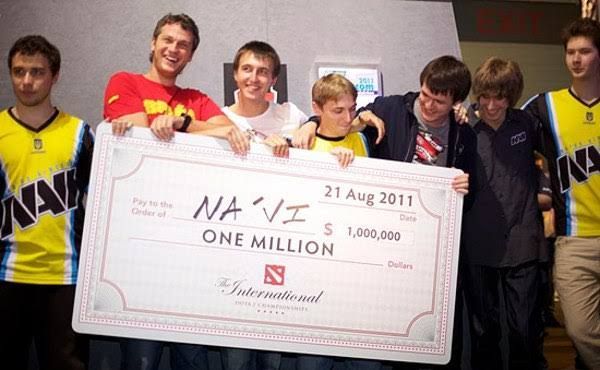
The next iteration of the tournament was held from August 26 to September 2, 2012, at Benaroya Hall in Seattle, Washington. With another US$1.6 million prize pool up for grabs between 16 competing teams, TI boasted the largest purse in esports for the second consecutive year.
Chinese team Invictus Gaming triumphed over the defending champs to take home the million-dollar grand prize. Even though Dota 2 was still technically in its ‘beta’ stage that year, the game cemented itself as one of the major esports titles in the world. Dota 2’s growth as an esport would coincide with the rising prize pot of its marquee event.
Enter: The Compendium
For TI3, Valve introduced The International Compendium, an interactive digital book on the tournament — designed in the same vein as the player sticker books that are popular in baseball.
Every purchase of the Compendium increased the base Dota 2 prize pool (set by Valve at US$1.6 million) by US$2.50. The publisher also introduced ‘stretch goals’ that were meant to unlock more items and bonuses for players who own the Compendium, while also growing the tournament pot.
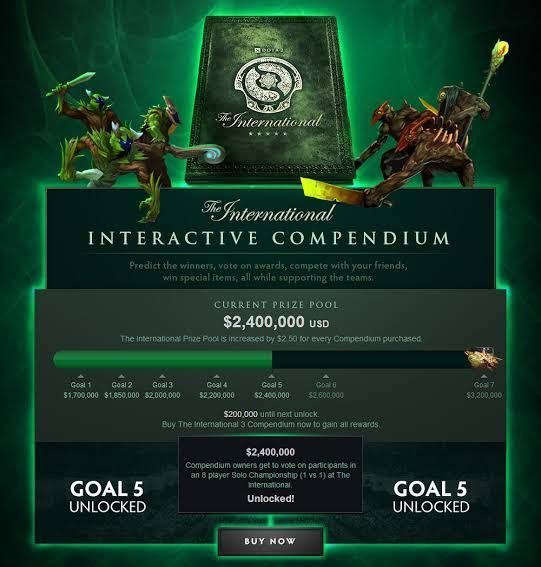
At TI3, a grand prize amounting to US$1,437,190 went to Swedish team Alliance after it bested Na’Vi in a thrilling five-game final series.
Despite boasting of an even larger grand prize, TI3 actually fell short of its Compendium stretch goal of doubling the Dota 2 prize pool. Still, the final amount totaled US$2,874,381 thanks to the Compendium. It was a sign of things to come for Dota 2 and TI.
Valve continued releasing Compendiums for the 2014 and 2015 iterations of TI, with each event outgrowing its predecessor by a substantial margin. It also helped that Dota 2’s publisher extended Compendium support to other minor tournaments throughout the year.
TI4 far exceeded TI3’s prize pool target by ballooning to US$10,923,977 — with a grand prize of over US$5 million going to Chinese team Newbee.
Amid speculation of whether the event could continue its spectacular growth, TI5 amassed a US$18,429,613 prize pot with the aid of the Compendium.
Valve also made some changes to the event’s prize allocation with TI5, spreading it out so that all participating teams would walk away with money in their pockets. At the end of the Dota 2 world championship, North America’s Evil Geniuses went home with the lion’s share of US$6,634,661.
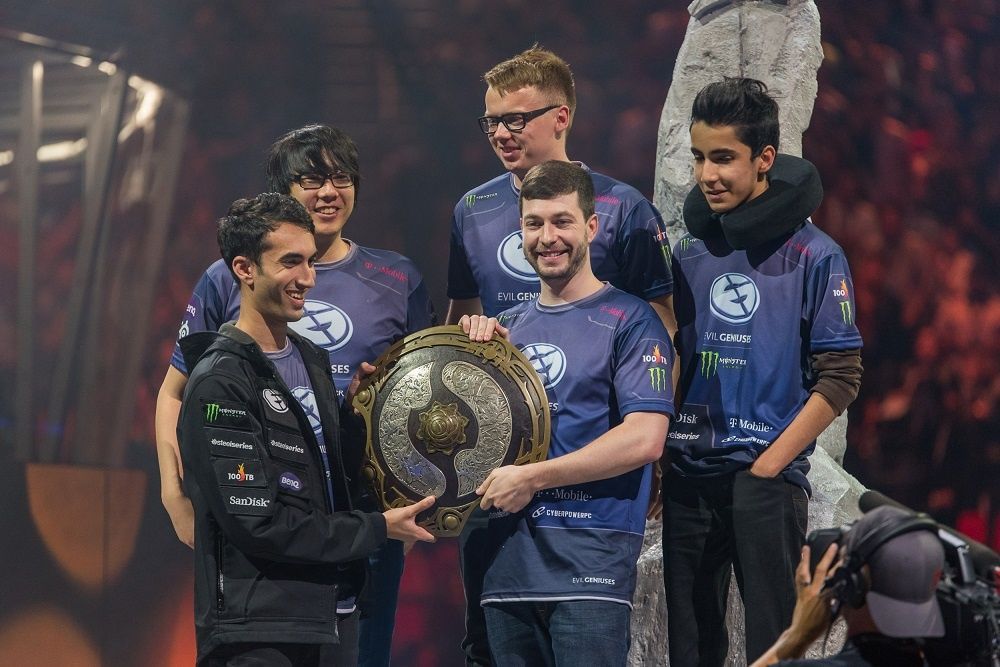
Credit: Valve Corporation
Dawn of Dota 2’s Battle Pass
Starting with TI6, Valve replaced the Compendium with the Battle Pass, which offered numerous quests, achievements, and other in-game rewards for its owner.
Unlike the Compendiums, the Battle Pass removed the crowdfunding stretch goals of previous tournaments. Rewards went directly to the owners immediately upon purchase of the Battle Pass. Moreover, instead of adding a fixed amount of US$2.50 to the prize pool, Battle Pass contributed 25% of its total proceeds to TI.
The new Battle Pass led to a US$20,770,460 prize pot for TI6, with Chinese team Wings Gaming claiming the grand prize of US$9.1 million. Despite only exceeding TI5’s prize pool by just over US$2 million, TI6 still impressed as it broke through the US$20 million mark — an achievement thought unlikely at the time.
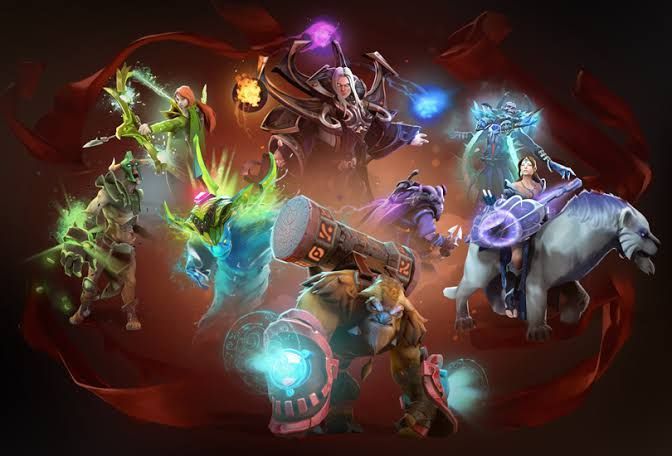
Even so, it was thought that the growth of TI’s prize pools would begin to plateau. Some even expected TI7 to have a smaller pot than its predecessor.
TI7 proved doubters wrong by growing a prize pool of US$24,787,916 with the Battle Pass — of which over US$10.8 million was claimed by eventual champions Team Liquid.
The beginning of a painful decline?
TI8 nearly succumbed to the pressure, with only less than a million dollars added to the previous year’s pot (for a final total of US$25,532,177).
While TI8 ended up being arguably the best version of the tournament to date — with European underdogs OG beating Chinese juggernauts PSG.LGD in a legendary grand final to take home more than US$11.2 million — TI seemed at risk of losing its Dota 2 prize pool prestige the next time it rolled around.
That became the prevalent assumption when the smash-hit Fortnite: Battle Royale announced that its own marquee event, the Fortnite World Cup, would have a US$30 million prize pool. The odds that TI9 could match, let alone exceed, that mark seemed bleak given the trend set by its most recent iteration.
Back in pole position
To the surprise of the esports world, Valve secured its streak when TI9 amassed a whopping US$34,330,068 prize pool.
To cap off the historic event, TI8 winners OG became the first back-to-back Dota 2 world champions after they defeated fellow European squad Team Liquid in the grand final. In winning their second TI tournament, OG’s players became the highest overall earners in esports history.

Credit: Valve
But it didn’t end there. Valve reached new heights in 2021 when the company hosted its 10th TI tournament. Despite delays due to the COVID-19 pandemic and a switch in venues from Sweden to Romania, The International made history in esports with a US$40,018,195 prize pool.
Russian squad Team Spirit then collected the largest grand prize in esports history when they defeated PSG.LGD to take home a whopping US$18,208,300 cash prize.
A major shift for the tournament moving forward

For TI11, Valve announced that they changed the schedule of the TI11 Battle pass. It will now run throughout the International 2022, and “for a significant amount of time afterward.”
Previous TI Battle Passes were always released months before, with fans following the rise of the tournament’s prize pool as the event dates came nearer.
“We want to make sure the time right after The International concludes is the best time to play Dota,” the developer said, hoping that this would give players more time to grind out rewards even after TI11 ends in October.
This was a huge change, for no one would know just much the total prize pool was going to be. The organizations and pro players don’t even know what is the sum of money they’re competing for.
Regardless of the new TI Battle Pass schedule, it’s hard to imagine that another esports event could top The International. If any tournament could continually set a bar so high, only to exceed it every year, history has shown that The International can do it.
Much more can be said on how Valve’s novel implementation of the Compendium and Battle Pass based crowdfunding was key for The International’s history of massive prize pools. But none of this would have been possible without a highly-dedicated Dota 2 community fueling it.
Even though League of Legends may be the more popular MOBA today, the millions of Dota 2 players and fans around the world — from all the way back to the 2000s’ original Warcraft III mods — are the real reason esports’ continues to grow and break records.
READ ALSO: Why Io is the most banned hero of all time at The International
